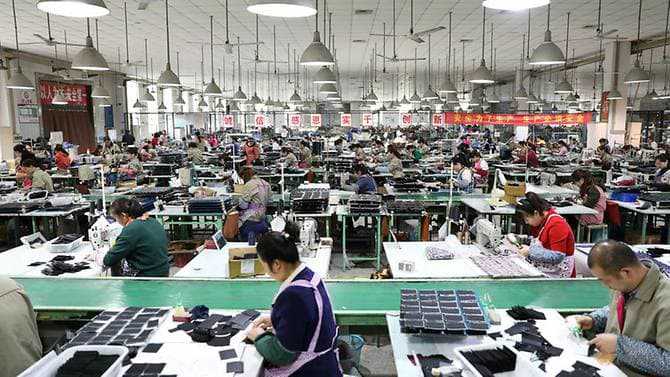China March factory activity grows for first time in four months
31 March, 2019

Factory activity in China unexpectedly grew for the first time in four months in March, an official survey showed on Sunday, suggesting government stimulus measures may be starting to take hold.
If sustained, the improvement in business conditions could suggest the ailing manufacturing sector is on a path to recovery, easing fears that China could slip into a sharper economic downturn.
The official Purchasing Managers' Index (PMI) rose to 50.5 in March from February's three-year low of 49.2, marking the first expansion in four months, according to data released by the National Bureau of Statistics (NBS) on Sunday. The 50-mark separates growth from contraction on a monthly basis.
Analysts surveyed by Reuters had forecast the manufacturing gauge would pick up slightly to 49.5, as factories ramped up production after long Lunar New Year holidays in February and rebuilt inventories ahead of a seasonal pickup in activity in spring.
Factory output grew at its fastest pace in six months in March, reversing a brief contraction in the previous month. It rose to 52.7 from February's 49.5, the highest level seen since September 2018. Total new orders also grew at a quicker pace.
But export orders still shrank for the 10th straight month, suggesting external demand still remained sluggish, and further policy cushion may be needed in case of an escalation in trade tensions. China's trade-oriented neighbors Japan, South Korea and Taiwan have all seen more signs of slackening demand, both in China and elsewhere.
Tit-for-tat tariffs imposed by Washington and Beijing remain in place as they continue negotiations. But eight months into the trade war that has disrupted the flow of billions of dollars of goods between the world's two largest economies, it is unclear if a deal acceptable to both sides can be done.
A U.S. trade delegation was in Beijing last week for the first face-to-face talks between the two sides since President Donald Trump delayed a March 1 deadline to avert a rise in tariffs on Chinese goods. In return, China's Vice Premier Liu He will head to Washington on April 3 for more talks.
U.S. officials told Reuters on Wednesday that the United States and China have made progress in all areas under discussion in trade talks, with unprecedented movement on the touchy issue of forced technology transfers.
Chinese factories continued to shed more staff in March, with the employment sub-index edging up marginally to 47.6 from 47.5 in February.
Amid rising labor costs and weaker sales, a growing number of foreign companies from car makers to electronics manufacturers have decided to shut plants in China in recent months, raising the specter of more layoffs. The jobless rate in February rose to 5.3 percent, nearing a two-year high.
Sony Corp is closing its Beijing smartphone plant and production will stop by the end of the month, while Samsung Electronics ceased operations at one of its mobile phone manufacturing plants in China last year.
The PMI survey showed small and mid-sized manufacturers, still fared worse than large companies, many state-controlled, although their activity notably improved from the previous month, suggesting that policymakers' efforts in channeling enough affordable financing to the private sector are gradually working.
Policymakers have acknowledged the economy is facing increasing pressure. Multi-year campaigns to curb debt risks and pollution have deterred fresh investment, while the trade war with the United States is inflicting a growing toll on China's export sector, threatening even more jobs.
In response, Beijing has announced more spending on roads, railways and ports, along with tax cuts of nearly 2 trillion yuan (US$297.27 billion) to relieve pressure on strained corporate balance sheets.
Growth in China's services industry - accounting for over half of the economy - picked up in March as new orders rose more quickly. The official non-manufacturing Purchasing Managers' Index (PMI) rose to 54.8 from 54.3.
Construction activity swung back into high gear in March with the return of warm weather. A sub-reading for construction activity stood at 61.7 in March, up from 59.2 in February.
TAG(s):
